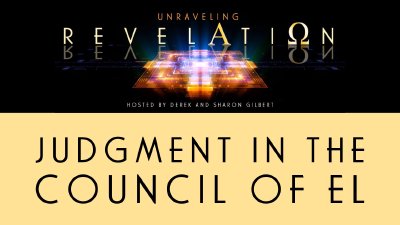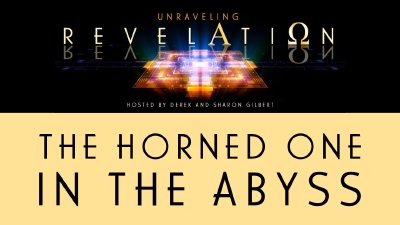Nearly 3,000 years ago, Solomon built cult sites for the pagan gods Astarte, Chemosh, and Milcom on the Mount of Olives. Because of this, the priests called it the Mount of Corruption.
Derek showed in his book The Second Coming of Saturn that a better translation from the Hebrew is Mount of the Destroyer—which is important, because the evidence also shows that Milcom, better known as Molech, is also “the Destroyer” of Revelation 9, Abaddon/Apollyon.
We also continue our discussion from last week about the potential rivalry between Abaddon and Satan. If, as Derek argues in The Second Coming of Saturn, “the Destroyer” is the entity who led rebellious sons of God in Genesis 6:1–4, will he be happily reunited with Satan when he’s freed from the abyss, or will there be civil war amongst the Fallen?

Mount of the Destroyer
November 14, 2022
Moscow, Baltimore, and the Four Horsemen
April 15, 2024
IN MARCH, a terrorist attack in Moscow left 144 dead and hundreds more wounded. Three days later, the Key Bridge at Baltimore collapsed when a cargo ship rammed a support. We discuss the prophetic implications of these events, especially since Russian security officials have disregarded claims of responsibility by the Islamic State, instead insisting that U.S. and British intelligence services assisted Ukraine in organizing the deadly attack.
Judgment in the Council of El
April 8, 2024
THE TRANSFIGURATION of Jesus is evidence that the rebellion of the Watchers on Mount Hermon was a serious sin. We continue our discussion of “the angel of the bottomless pit,” Abaddon/Apollyon, known as El to the ancient Canaanites, for whom Mount Hermon on Israel’s northern border was essentially his Olympus. It’s not a coincidence that Jesus took his disciples on a thirty-mile hike from his home base in Capernaum to declare his divinity there instead of, say, at the Temple in Jerusalem.
The Horned One in the Abyss
April 1, 2024
WE CONTINUE our deep dive into the leader of the Genesis 6 rebellion, who we believe is “the angel of the bottomless pit” (Rev. 9:11), Apollyon/Abaddon. Why, when we studied Revelation 9 more than a year ago? Because our research has led us to conclude that the chief of the rebellious Watchers, called Shemihazah in the Book of 1 Enoch, was worshipped throughout the ancient Near East and classical Greece and Rome under the names Saturn, Kronos, El, Enlil, Milcom (Molech), Assur, Dagon, Osiris, and others. In particular, we look at El and Kronos, and their connections to bovid imagery. El’s main epithet (nickname) was “Bull El,” and the name Kronos probably derives from a Semitic word, qarnu, that means “horns.” In fact, the name of the gods over which Kronos ruled, the Titans, also comes from a Semitic language: It was the name of an Amorite tribe, the Tidanu, who were eventually worshipped by the Canaanites as underworld entities linked to the Rephaim—which is where the Greeks got the concept of their demigod heroes like Herakles and Perseus! In short, this “king of the god-gate” (“king of Babylon” in Isaiah 14) inspired the Amorites, who originated in Syria near a mountain called Jebel Diddi (“Mount Titan”), to spread the worship of this fallen angel chained up in the bottomless pit to nearly every land around the Israelites. And this, we think, is what God had in mind when he mentioned “the iniquity of the Amorites” to Abraham nearly 4,000 years ago.







